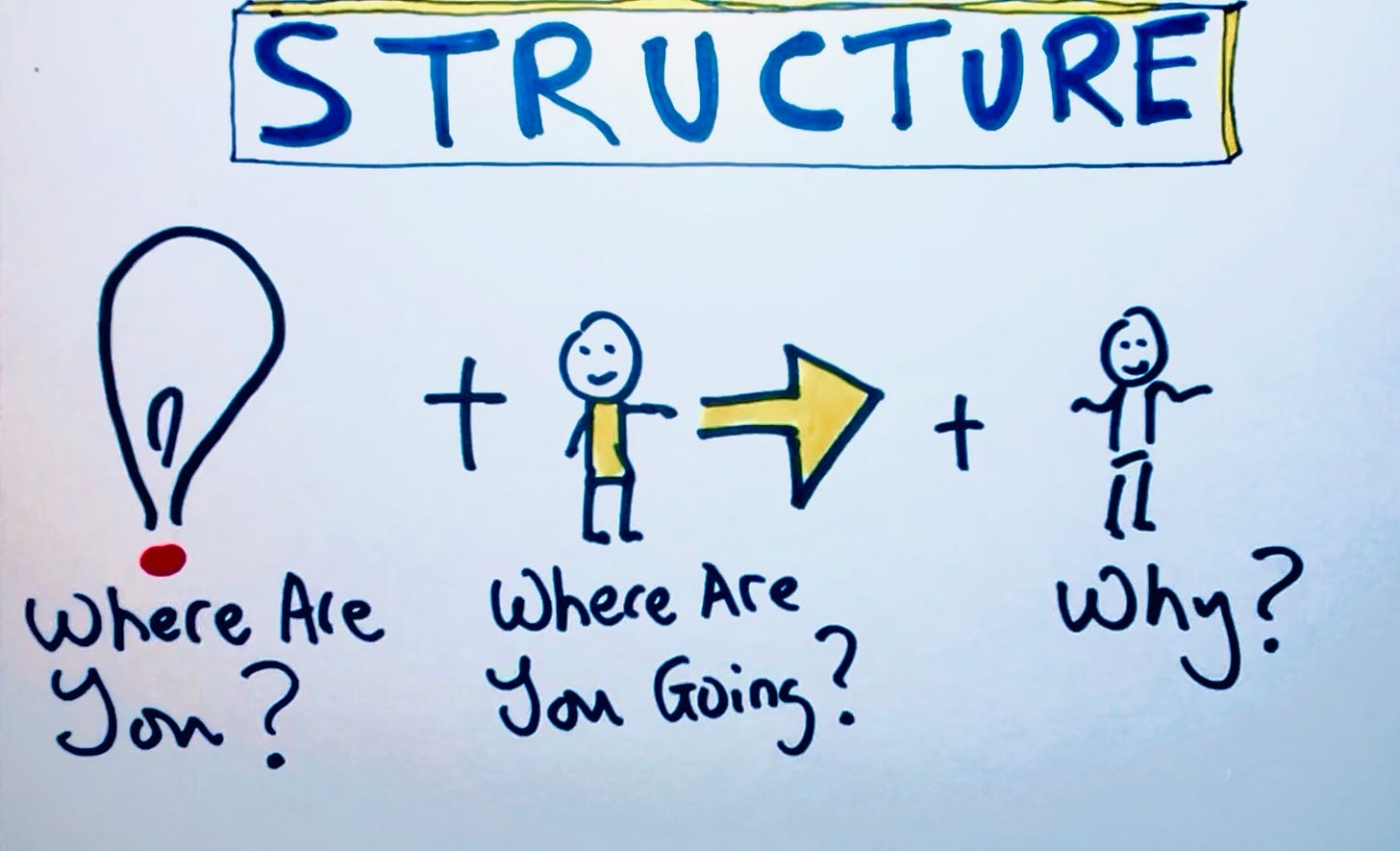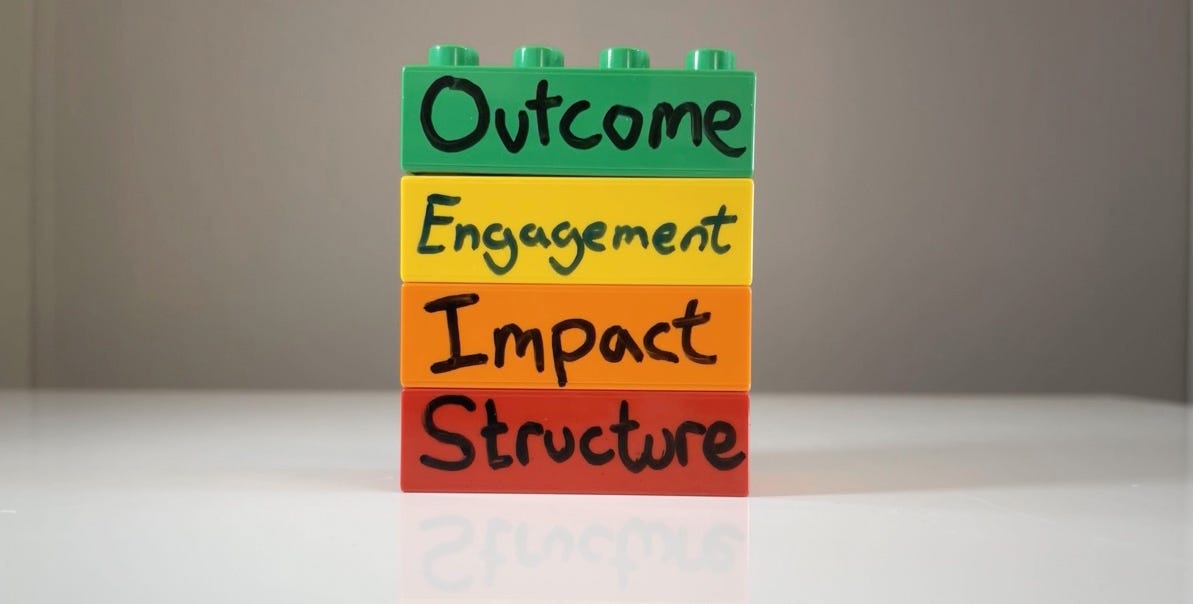Note: This article was originally published in Substack on 7 Apr. 2023
I’ve listened to hundreds of hours of therapy sessions. When sessions lack impact, a handful of reasons are at play. But at its foundation, it is often contributed by the lack of one key feature:
Structure.
Whenever we think of how to structure a session, we turn to therapy approaches. This is why models like cognitive behavioural therapy (CBT) and mindfulness-based approaches are alluring to trainees. EMDR, or eye movement desensitisation reprocessing is also very appealing to clinicians of various experience levels. This approach provides a step-wise sequence protocol. These approaches provide a recipe on “what to do”.
However, as I’ve mentioned elsewhere, this is a conflation between structure and models. Models can provide a sense of structure, but structure need not be confined to restricting ourselves to particular approaches.
Even when you adhere to a specific modality, it doesn’t necessarily lead to a well-formed session. This has only become apparent to me through listening to clinician’s, as well as my own session recordings.
Structure Defined
Here’s how I think about structure:

For more of an elaboration on the principles on these three steps, see this free previewvideo from Structures & Impact:

Why Can’t I Just Go With the Flow?
To structure your sessions, it doesn’t not mean that you become rigidified, prescriptive and inflexible. It’s not about becoming formulaic, but rather, the aim is build the foundations, so as to guide the process.
Structure provides us so much as a not a formula, but a form—a scaffold to help us grow a meaning conversational experience in the session.
When we have a structural foundation for the therapy hour, we increase the odds of creating a moving, emotional impact.
When we make it conducive for a deep experience for our clients, we increase the odds for engagement.
When client’s are engaged in the process, the more likely we can cultivate a fruitful outcome, in service of the person in front of us that we are trying to help.

When we just “go with the flow” without a sense of directionality, you run the risk of getting lost. In turn, this creates a meandering experience for the client, and thus, more likely for them to disengage from treatment.
Tip: How to Create Structure
Here are some things you can begin to do in your clinical practice.
For the next client that you are seeing, ask yourself these 3 questions:
1. “Where are you?”
- Where is my client?
- Where is she at this critical juncture of her life?
- If this was a chapter in her life, what would she title it?
- Don’t be afraid to ask.
2. “Where are you going?
- What is the direction that you are taking with your client?
- Does the approach that you are taking sit well with your client’s worldview?
- Is there an agreement about the direction/goals/aims?
- Don’t be afraid to ask.
3. “Why?”
- What does your client really care about? What are their loves? What makes them come alive?
- What are some motivating forces that are hidden in plain sight?
- Who are the people that means the world to them?
- Don’t be afraid to ask.
Finally, make sure that there are connective tissues between all of the three nodes.
Structure is a co-constructed activity. With each person that you meet in the healing endeavor, build this foundation, so that the river flows in a life-giving direction.



1 Response
[…] provides guidance:You are a guide to the process, so provide the scaffolds of a. where you are, b. where you are going, and c. why you are guiding the person to go in this […]